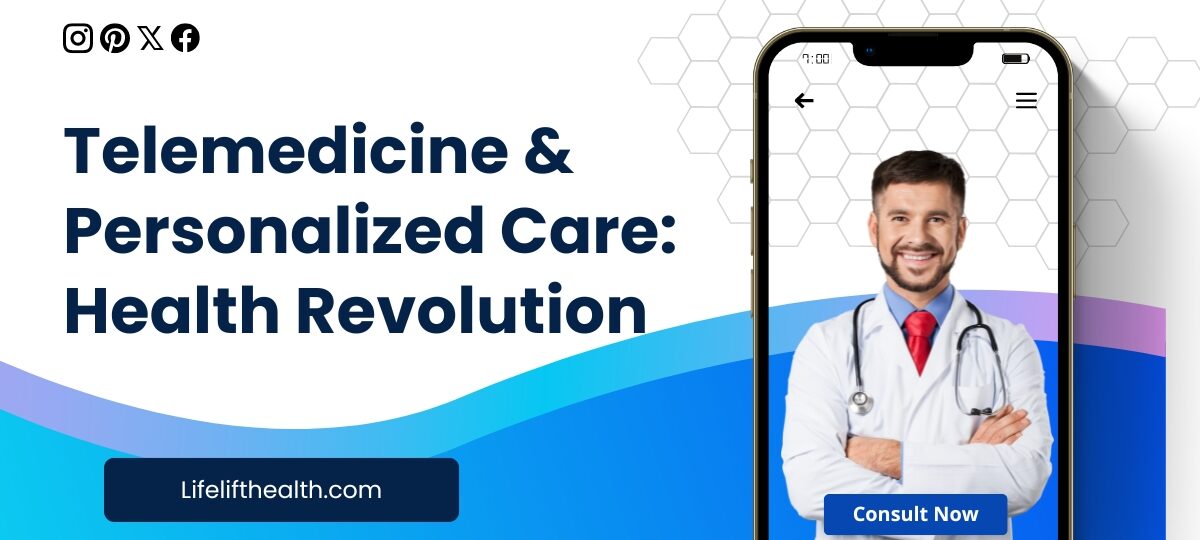Find Telemedicine’s effect on healthcare: benefits, difficulties, and future patterns. Investigate personalized care’s job in reshaping patient encounters.
Prologue to Telemedicine
The idea of Telemedicine isn’t new however lately, the field of healthcare has seen a striking change, to a great extent impelled by progressions in innovation. Quite possibly of the main improvement in such manner is the rise of telemedicine. Telemedicine alludes to the arrangement of healthcare benefits from a distance, utilizing media communications innovation. This can incorporate interviews with healthcare suppliers, remote checking of patients, and, surprisingly, virtual medical procedures. The idea of telemedicine isn’t new, yet its boundless reception and reconciliation into standard healthcare rehearses mark a critical change in how healthcare is conveyed.
The Rise of Telemedicine
The rise of telemedicine can be credited to different variables. Right off the bat, the rising infiltration of cell phones and web network has made it more straightforward for individuals to get to healthcare benefits from a distance. Furthermore, the developing interest for advantageous and financially savvy healthcare arrangements has powered the reception of telemedicine stages. Besides, the Coronavirus pandemic went about as an impetus, constraining both healthcare suppliers and patients to embrace telemedicine as a more secure option in contrast to face to face visits.
Benefits of Telemedicine
Telemedicine offers a few benefits to the two patients and healthcare suppliers. One of the main benefits is further developed availability. Telemedicine permits patients to talk with healthcare experts from the solace of their homes, wiping out the requirement for movement and lessening stand by times. In addition, telemedicine upgrades accommodation by empowering patients to plan arrangements whenever it might suit them, without getting some much needed rest work or revamp their timetables. Furthermore, telemedicine can be more financially savvy than conventional in-person visits, as it kills transportation costs and diminishes the weight on healthcare offices.
Personalized Care in Healthcare
Customized care is a method for managing medical services that thinks about each understanding’s striking prerequisites, tendencies, and conditions. As opposed to embracing a one-size-fits-all methodology, personalized care looks to fit treatment plans and mediations to the singular qualities of every patient. This can incorporate factors like hereditary inclinations, way of life decisions, and financial foundation. Personalized care works on understanding results as well as improves patient fulfillment and commitment with healthcare administrations.
Compromise of Telemedicine and Customized Care
The mix of telemedicine and customized care holds colossal potential to alter the medical services business. Telemedicine empowers healthcare suppliers to convey personalized care to patients no matter what their geological area. Through far off discussions and virtual checking, healthcare experts can assemble significant experiences into every patient’s health status and designer treatment designs as needs be. Besides, telemedicine stages can use information examination and computerized reasoning to recognize examples and patterns in persistent information, further upgrading the personalization of care.
Difficulties and Concerns
Notwithstanding its possible benefits, the far reaching reception of telemedicine faces a few difficulties and concerns. One of the essential worries is protection and security. Communicating delicate health data over computerized networks raises worries about information breaks and unapproved access. Furthermore, the computerized partition – the hole between the people who approach innovation and the people who don’t – represents a huge boundary to the reception of telemedicine, especially in country and underserved networks. Besides, administrative obstacles, for example, authorizing necessities and repayment strategies, can hinder the development of telemedicine administrations.
Defeating Difficulties
Tending to the difficulties confronting telemedicine requires a complex methodology. Mechanical headways, like encryption and secure correspondence conventions, can assist with relieving protection and security chances related with telemedicine. Additionally, drives pointed toward spanning the advanced gap, for example, growing broadband foundation and giving endowments to innovation reception, can guarantee evenhanded admittance to telemedicine administrations. Furthermore, policymakers should attempt to refresh guidelines and repayment strategies to oblige the novel qualities of telemedicine and support its far and wide reception.
Fate of Telemedicine and Personalized Care
The future of telemedicine and personalized care holds monstrous commitment. As innovation keeps on advancing, telemedicine stages will turn out to be more complex, empowering more consistent and personalized communications among patients and healthcare suppliers. In addition, the reconciliation of telemedicine with arising advancements, for example, man-made reasoning and wearable gadgets will additionally improve the conveyance of personalized care. Eventually, telemedicine can possibly change the healthcare scene, making excellent healthcare more open, advantageous, and personalized than at any other time.
Execution Difficulties in Healthcare Settings
Executing telemedicine and personalized care in conventional healthcare settings presents exceptional difficulties. One such test is obstruction from healthcare experts who might be familiar with customary models of care conveyance. Persuading doctors and other healthcare suppliers to embrace telemedicine requires instruction and preparing to acclimate them with the innovation and its benefits. Furthermore, incorporating telemedicine into existing work processes and electronic health record frameworks can be mind boggling and tedious. Defeating these execution challenges areas of strength for requires, successful change the executives methodologies, and continuous help for healthcare staff.
Patient Training and Commitment
For telemedicine and personalized care to be successful, patients should be taught about these new methodologies and effectively participated in their healthcare. Numerous patients might be new to telemedicine and may have worries about its viability and security. Hence, healthcare suppliers should find proactive ways to instruct patients about the benefits of telemedicine and address any worries or misinterpretations they might have. This might include giving data through different channels, like patient entries, instructive materials, and one-on-one conversations. Furthermore, advancing patient commitment through apparatuses, for example, remote observing gadgets and portable applications can engage patients to play a functioning job in dealing with their health and prosperity.
Moral Contemplations in Telemedicine and Personalized Care
As telemedicine and personalized care become more pervasive in healthcare, taking into account the moral ramifications of these practices is fundamental. One moral concern is the potential for inconsistent admittance to care, especially for weak populaces who might need admittance to innovation or have restricted advanced proficiency. Healthcare suppliers should guarantee that telemedicine administrations are available to all patients, no matter what their financial status or geological area. Also, issues connected with patient protection and information security should be carefully addressed to safeguard delicate health data from unapproved access or breaks. In addition, as personalized care depends on gathering and examining broad patient information, maintaining patient independence and privacy during the process is essential. Healthcare suppliers should comply with moral rules and guidelines to guarantee that telemedicine and personalized care rehearses focus on persistent prosperity and maintain the standards of helpfulness, non-evil, and equity.
Conclusion
In conclusion, telemedicine and personalized care address a health revolution that is reshaping how healthcare is conveyed and experienced. By utilizing broadcast communications innovation and embracing personalized care draws near, healthcare suppliers can beat geological obstructions, work on persistent results, and upgrade the general nature of care. Nonetheless, understanding the maximum capacity of telemedicine requires tending to difficulties, for example, protection concerns, computerized partition, and administrative obstructions. With purposeful endeavors from partners across the healthcare biological system, telemedicine has the ability to introduce another time of healthcare that is really persistent focused and available to all.

